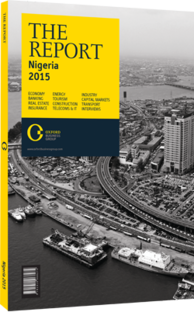Johan Steyn, Managing Director Middle East and Africa, Cargill: Interview

Interview: Johan Steyn
What are the greatest obstacles to improving usage rates for arable land in West Africa?
JOHAN STEYN: Africa’s agricultural potential is widely recognised due to the availability of arable land that has yet to be utilised. However, investment to build local capacity and infrastructure is required to improve land usage and enable small-scale farmers, which dominate African agriculture, to grow from subsistence to productive and commercial farming. There are already emerging examples of greater coordination at the national, state and local levels, such as Nigeria’s Agricultural Transformation Agenda (ATA). In addition, supporting the adoption of improved farming practices, increasing access to crop inputs and strengthening connections with markets will boost productivity and land use. Resolving property rights for smallholder farmers is also essential in attracting private sector investment.
How can the sourcing of raw materials in West Africa be improved?
STEYN: Developing agricultural supply chains and infrastructure are critical to increasing the ability to source key crops in Africa. Cargill, for instance, works with over 200,000 farmers in Africa to provide training, better seed varieties and fertilisers, and a reliable market for farmers’ crops. As a result communities are benefitting from improved yields and crop quality, better agricultural practices and higher incomes. Additionally, there are international initiatives, such as the New Alliance for Food and Nutrition Security and the Grow Africa partnership, as well as national agricultural policies and the Comprehensive Africa Agriculture Development Programme, which are all supporting investment to stimulate productivity and infrastructure improvements.
Where do you see the greatest scope for improving efficiency of supply chains?
STEYN: Developing Africa’s agricultural supply chains requires a focus at the farm level as well as on infrastructure that is essential for greater efficiency and scale. Africa’s smallholder farmers have limited access to technology and support to adopt more sustainable practices. Strengthening farmer organisations provides the scale to connect with thousands of smallholders, which is almost impossible to do on an individual basis. These organisations play a critical role in improving access to markets and enabling farmers to pool their resources. Additionally, there is a clear need for investment in better transport and storage networks to maximise the value of the crops being harvested and to allow farmers to choose when to sell for the best price.
How would you rate the overall attractiveness of Nigeria’s stable crop processing zones (SCPZs)?
STEYN: We are excited by the potential opportunities and the positive strides the Nigerian government is making to support private sector investment in agriculture through its ATA and the SCPZs. The proposed SCPZs set out a model that has the potential to be a catalyst for positive changes. It sets out a clear foundation; however, it is critical that both the public and private sector work together to deliver on this. This includes key infrastructure to support processing operations, putting in place policies to encourage growth and investment, and the essential support to improve farming practices to guarantee reliable supply chains.
What are the challenges agricultural and food processors face in West Africa?
STEYN: There is a much greater recognition of the importance and value that private sector companies can offer to support farmers and the development of the agricultural sector. We are already partnering with governments, organisations and communities on the ground to encourage and attract private sector investment. As in any other region, however, establishing trust and good working relationships is essential. It is important for international companies to take the time to listen, engage and understand local views, and demonstrate our approach and the results of our work.
You have reached the limit of premium articles you can view for free.
Choose from the options below to purchase print or digital editions of our Reports. You can also purchase a website subscription giving you unlimited access to all of our Reports online for 12 months.
If you have already purchased this Report or have a website subscription, please login to continue.

